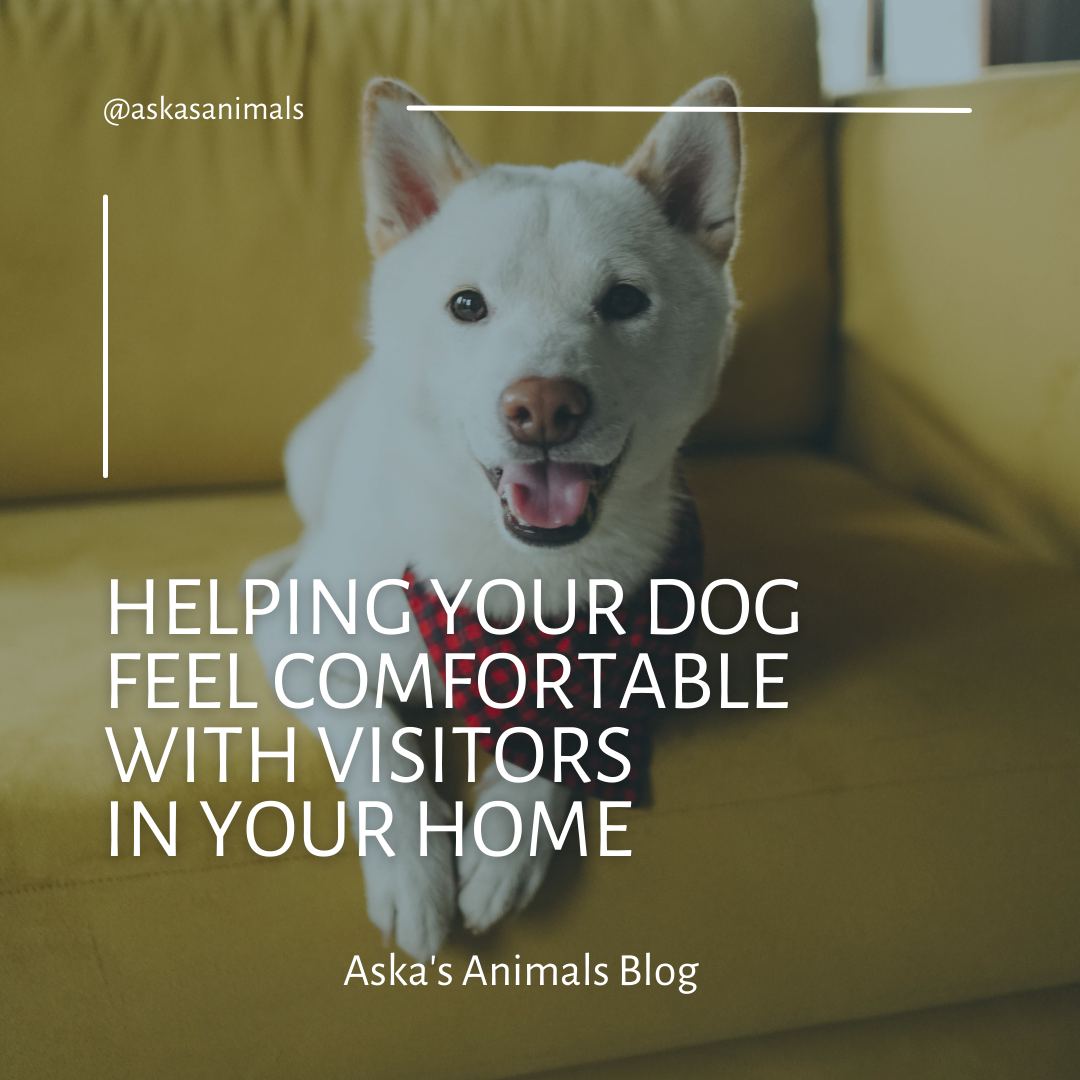Helping Your Dog Feel Comfortable With Visitors In Your Home
How To Be Your Dog’s Advocate This Holiday Season

With the holiday season comes visitors to your home. Here’s how to be your dog’s advocate when friends and family arrive. Unfamiliar people arriving at your home can be an upsetting situation for your dog, especially if your dog is sensitive or fearful. While you may know folks are coming, your dog very likely does not. Visitors are followed by a tsunami of sensory input – smell, sound, and sights, along with the excitement on the part of the humans when they rush to answer the door. All of this can make even the best-behaved dog an over aroused mess.
Exposure therapy does not work for dogs. For dogs who are unsure, fearful, or just not excited to meet and be touched by unfamiliar people, ‘making’ them meet or be touched by a stranger to help them ‘get over their fears’ is not recommended. It’ll likely only increase their discomfort and concern around strangers.
In all situations, your top two priorities as a dog owner are 1) keep your dog feeling safe (whatever that looks like for your dog) and 2) build your dog’s trust in you to keep them safe. It’s important that you carefully manage circumstances and experiences so that your dog enjoys the experience and learns that visitors can be great.
Many dogs find it far less worrying to enter a room where visitors are already present; it’s a different context to dogs than already being in a room that someone enters. This 3-step way to slowly introduce your dog to visitors begins with sound and smell and then moves on to sight.
1. Have visitors give you a heads up a few minutes before arriving so you can set the stage. You can also keep your door locked with a note that reads, ‘We hear you but need a moment to set our dog up for success.’
a. Set your dog up in the car in the garage (where he can’t see visitors pull into the driveway), so he isn’t present when the person arrives. Once your visitor has entered and settled in, move your dog from the car into a space he finds safe in the house. Maybe a crate in a peripheral area, or a hallway with a baby gate that prevents his access to the main area of the house, or an exercise pen. This way, he can hear and smell but not see the visitor. Be sure to give him a relaxing long- term project like a raw bone or new bully stick when he comes into the house and loads into the crate or hallway. Another option is to utilize a bedroom to give your dog a bone or something similar with the bedroom door closed.
- It’s important to note the amount of time the dog will be confined will greatly vary dog to dog. Some dogs will be ready to meet your visitors after 10 minutes, some will need a couple hours and others will need multiple visits.
- For visitors who are unfamiliar, depending on the dog and their fear levels, you may want to leave them confined with a bone for the entirety of the visit.
2. For dogs who are less fearful, after some time, provided the dog is calm and relaxed, you can then add the next sense: sight. On a leash, bring the dog from the out-of-sight confinement into an area within sight of the visitors but still some distance away. Perhaps to a peripheral exercise pen or a cozy crate in the room your visitors are in. Bring his soothing lick or chew project with him.
3. If your dog is ready, give your dog access to the visitors, but first, be sure to educate your visitors about human versus dog body language. Often the best way to help the dog feel comfortable once out of confinement is to instruct your visitors to ignore him. Dogs innately find many human gestures and body language threatening – especially human greetings, which include 3 major scary things for dogs who are sensitive or who have not been well socialized (or both!) – direct eye contact, leaning/reaching and facing them head on. Unfortunately, most people exhibit all these behaviors when greeting a dog, so it’ll benefit the dog – and help them to feel more at ease – if you coach new people to greet him in a more ‘dog like’ manner.
- For some dogs, fear manifests as nipping at the heels of unfamiliar people especially when they get up or move between rooms. If this is how your dog reacts, the best route may be to keep your dog confined to the space in which they feel safe.
Remember, you’re creating habits here, so don’t push your luck! You’re better safe than sorry. If you decide to leave your dog crated in your bedroom chewing merrily away for the duration of someone’s visit, your dog is having a start to finish relaxing, safe-feeling experience – and that’s the goal.
Some folks believe a dog who goes over the top when someone comes to the door is being ‘protective.’ More likely, the dog is just over aroused or afraid. Either way, we don’t want to allow or encourage our dogs to get this stressed out when someone comes to the door; allowing your dog to practice barking at visitors to the house when they arrive is asking for trouble. Why?
1. It elevates stress levels, and these will take time (days or even weeks) to recover. This is undesirable because it can affect behavior across the board.
2. It’s not your dog’s job to worry about who is coming to the house – it’s yours. Allowing him to believe it is can lead to undesirable habits and unneeded stress in his life.
3. It’s dangerous! If a medic needs to enter because you passed out in your bathtub, but your dog has been allowed to believe it’s their job to decide who comes in the house…uh oh. Think of it this way: every experience a dog has in which he feels safe and comfortable interacting with people is a deposit in the bank account…the more deposits he has the more wiggle room you’ll have when it’s time for an unexpected withdrawal (overwhelming experience) down the road. And so, while creating good experiences is key, so is avoiding fewer ideal ones.
If your dog shows signs of nervousness, anxiety or fear when visitors are in your home, your job is to be your dog’s advocate and to ensure safe, fun experiences. This holiday season, when visitors enter your home, a good goal is to set up experiences in which you can be sure that your dog will feel calm and safe from start to finish.
Questions? Check out our virtual and in-person Behavior Workshops as well as the Resources page of our website!



